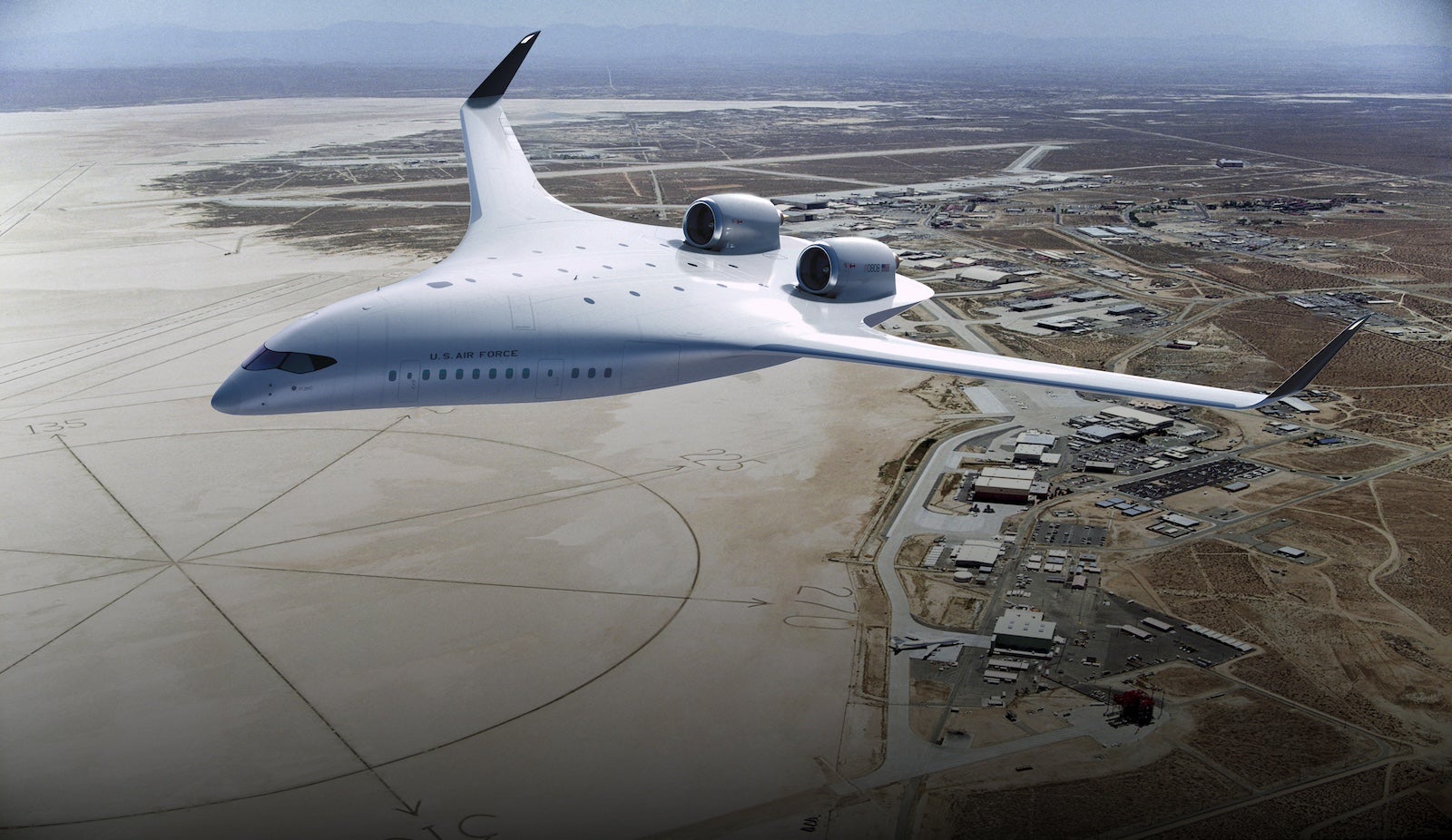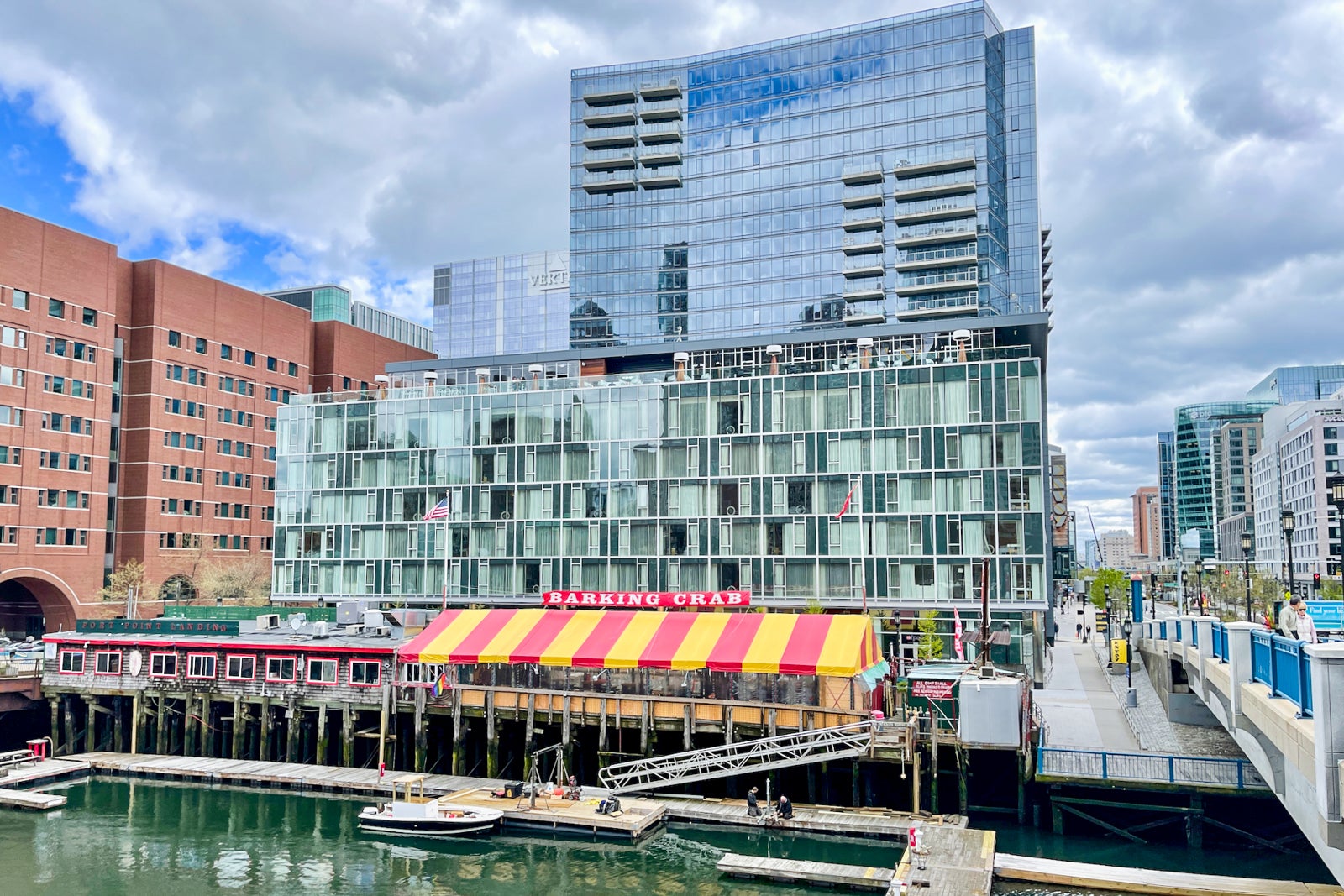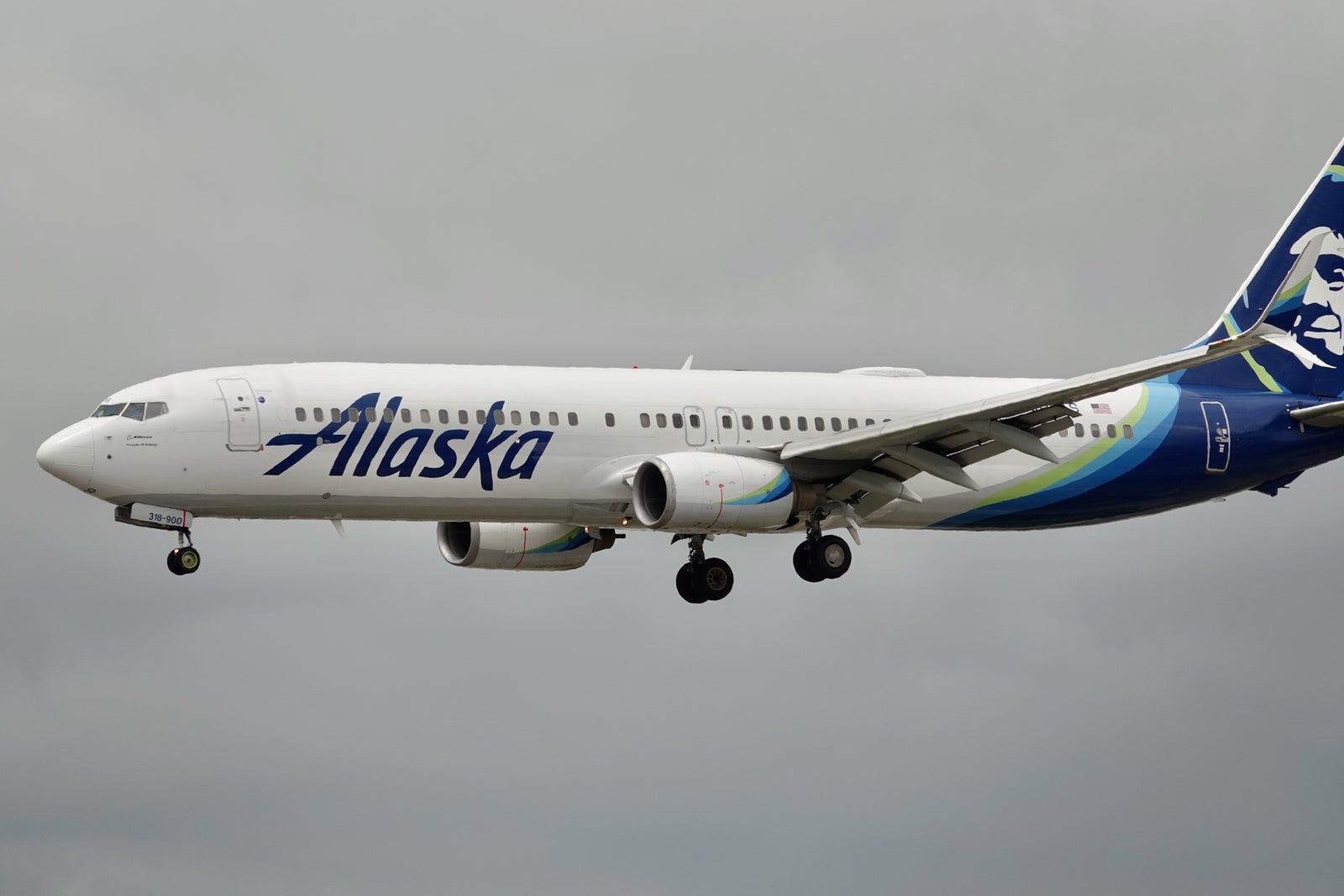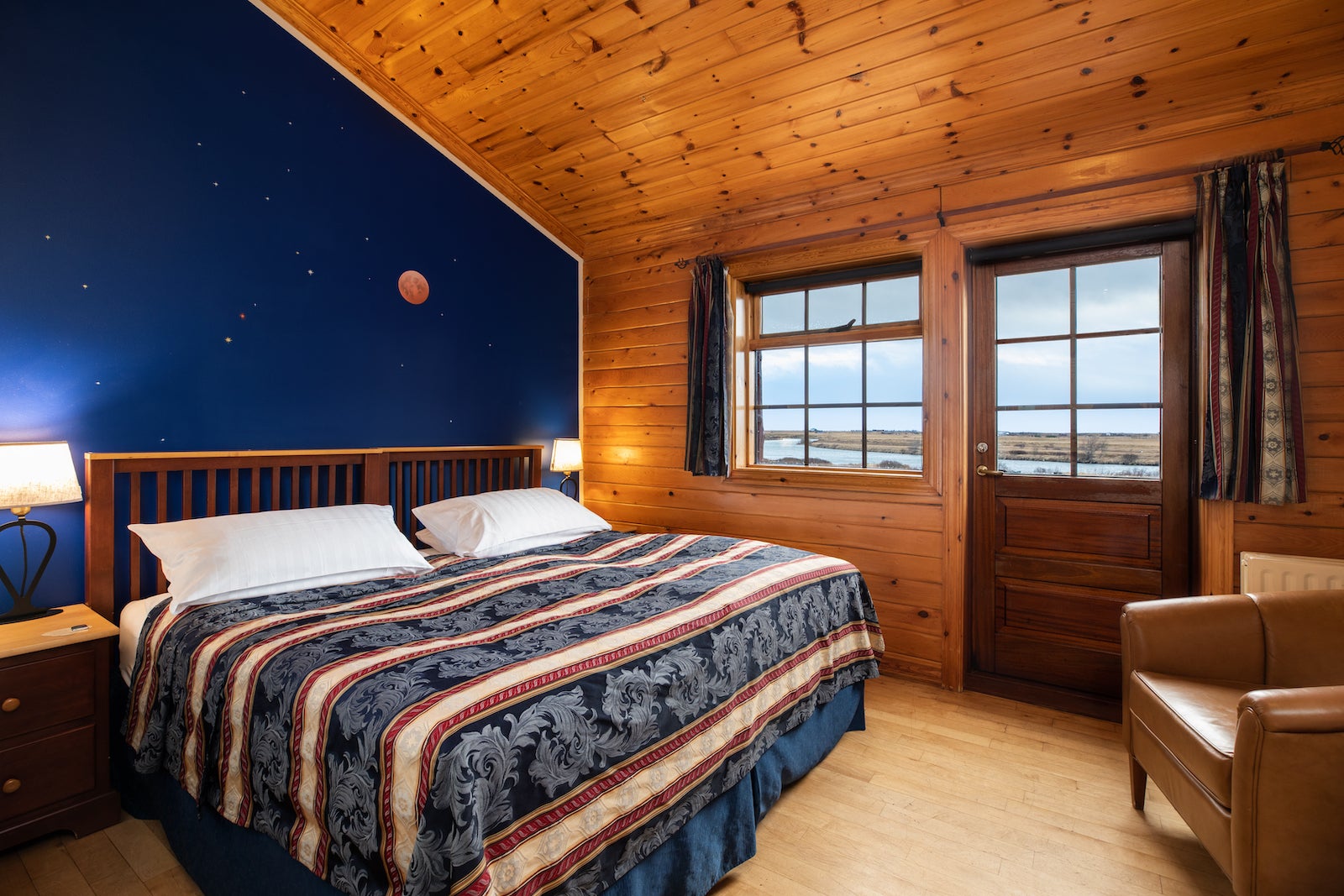JetZero gets FAA permission to test ‘blended wing’ aircraft concept
A California company recently cleared a hurdle to begin testing a miniature version of its next-generation aircraft.
Long Beach-based JetZero has designed a prototype for a “blended wing body” aircraft, which looks nothing like any Boeing or Airbus jet you’ve ever seen. And last week, the company got FAA permission to begin flight tests on a slimmed-down demonstrator version that’s an eighth of the size of the futuristic plane.
Dubbed by JetZero as “the biggest leap in commercial aircraft architecture since the dawn of the jet age,” the aircraft sports two jet engines atop a slim, Star Wars-like airframe that, the company says, helps it fly while burning half the fuel of a standard “tube-and-wing” jet.
While most aircraft get their “lift” — or upward momentum — from their wings, JetZero’s entire design mimics a wing, the company says. The aircraft is also designed to be relatively light in weight and feature less drag than a typical jet, avoiding the pitfalls that can cause an aircraft to fly less efficiently.
Want more airline-specific news? Sign up for TPG’s free biweekly Aviation newsletter.
JetZero sees its aircraft as a future option for both military and commercial aviation use.
Mock-ups of the new-age jet on its website show the aircraft adorned in U.S. Air Force livery; a fitting design considering the U.S. Department of Defense’s Innovation Unit last fall awarded the company $235 million over four years to help it produce a full-scale demonstrator aircraft by early 2027.
And images of the aircraft parked at a jet bridge make clear the company hopes it could be a potential candidate for future commercial airline use, too, operating with the engines of a narrow-body jet but possessing the passenger capacity of a small wide-body, JetZero says.
The company is targeting the middle of the airline market, a spokesperson tells TPG, with the future commercial versions of the jet envisioned as having the potential to carry as many as 250 passengers.

Daily Newsletter
Reward your inbox with the TPG Daily newsletter
Join over 700,000 readers for breaking news, in-depth guides and exclusive deals from TPG’s experts
For comparison, every narrow-body jet in American Airlines’ fleet carries fewer than 200 passengers (though some versions of the Airbus A321 get close) … but its wide-body Boeing 777 and 787 Dreamliner well exceed 200 passengers.
“This breakthrough fills the mid-market gap with an aircraft that achieves half the fuel burn and emissions of the aging fleet that it will replace,” the company said in a statement last year.
Importantly, the jet would be compatible with forms of Sustainable Aviation Fuel. “SAF,” as it’s known in the industry, consists of new-age, more environmentally-friendly forms of jet fuel, which airlines have begun to eye with increasing intent amid pressure throughout the industry to reduce emissions — though with plenty of skepticism about its viability as a large-scale replacement for kerosene-based fuels… including its still-far-higher cost to produce.
JetZero sees its efficient design as a way to key to burn less of (and spend less on) the newer, more expensive fuel.
In a key step, the company reported last week that the FAA granted it an airworthiness certificate to begin flight tests on a its small demonstrator aircraft called “Pathfinder,” which the company built with the help of funding from NASA.
At 12.5% of the size of its full-scale design, the demonstrator has a 23-foot wingspan, but all of the properties of a full-scale demonstrator — which the company hopes to build by 2027.
JetZero plans to test Pathfinder’s aerodynamic capabilities over the coming months, including the stability and control characteristics of the blended wing body concept, and the performance of the aircraft’s innovative landing gear.
Will the concept ultimately come to fruition as a viable option for the future of flight?
Certainly, bringing a new aircraft design into the marketplace is not an easy task.
JetZero believes the fact that the aircraft relies on existing narrow-body jet engines — among other features — plus its ability to seamlessly integrate with existing aviation infrastructure make its viability more promising, even as it hones this cutting-edge aircraft design.
“It’s an interesting concept and it has strengths and weaknesses compared to ordinary aircraft,” said Timothy Takahashi, an aerospace engineering expert at Arizona State University’s School for the Engineering of Matter, Transport and Energy, noting he’s “cautiously optimistic” — at least when it comes to potential military uses.
“Various blended wing body aircraft have been built in prototype form for at least the past 25 years, in various shapes and sizes,” Takahashi said, noting its large potential onboard capacity could make it suitable as a tanker aircraft meant for refueling, among other possible uses.
As to whether you’ll find it at an airport gate anytime soon, he’s far more skeptical.
“As an airliner, it doesn’t seem like its time has come yet,” Takahashi added.
Still, the existence of this prototype and the key testing step approved recently by the FAA for JetZero’s design is just the latest reminder of the profound innovation happening in the aviation industry, amid a race to design the most fuel-efficient and modern aircraft for the future.
Related reading:







